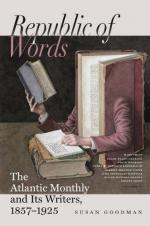A ruinous and ivy-grown bridge, that projects from the bank a little on the hither side of the castle, has the effect of making the scene appear more entirely apart from the every-day world, for it ends abruptly in the middle of the stream,—so that, if a cavalcade of the knights and ladies of romance should issue from the old walls, they could never tread on earthly ground, any more than we, approaching from the side of modern realism, can overleap the gulf between our domain and theirs. Yet, if we seek to disenchant ourselves, it may readily be done. Crossing the bridge on which we stand, and passing a little farther on, we come to the entrance of the castle, abutting on the highway, and hospitably open at certain hours to all curious pilgrims who choose to disburse half a crown or so towards the support of the Earl’s domestics. The sight of that long series of historic rooms, full of such splendors and rarities as a great English family necessarily gathers about itself, in its hereditary abode, and in the lapse of ages, is well worth the money, or ten times as much, if indeed the value of the spectacle could be reckoned in money’s-worth. But after the attendant has hurried you from end to end of the edifice, repeating a guide-book by rote, and exorcising each successive hall of its poetic glamour and witchcraft by the mere tone in which he talks about it, you will make the doleful discovery that Warwick Castle has ceased to be a dream. It is better, methinks, to linger on the bridge, gazing at Caesar’s Tower and Guy’s Tower in the dim English sunshine above, and in the placid Avon below, and still keep them as thoughts in your own mind, than climb to their summits, or touch even a stone of their actual substance. They will have all the more reality for you, as stalwart relics of immemorial time, if you are reverent enough to leave them in the intangible sanctity of a poetic vision.




